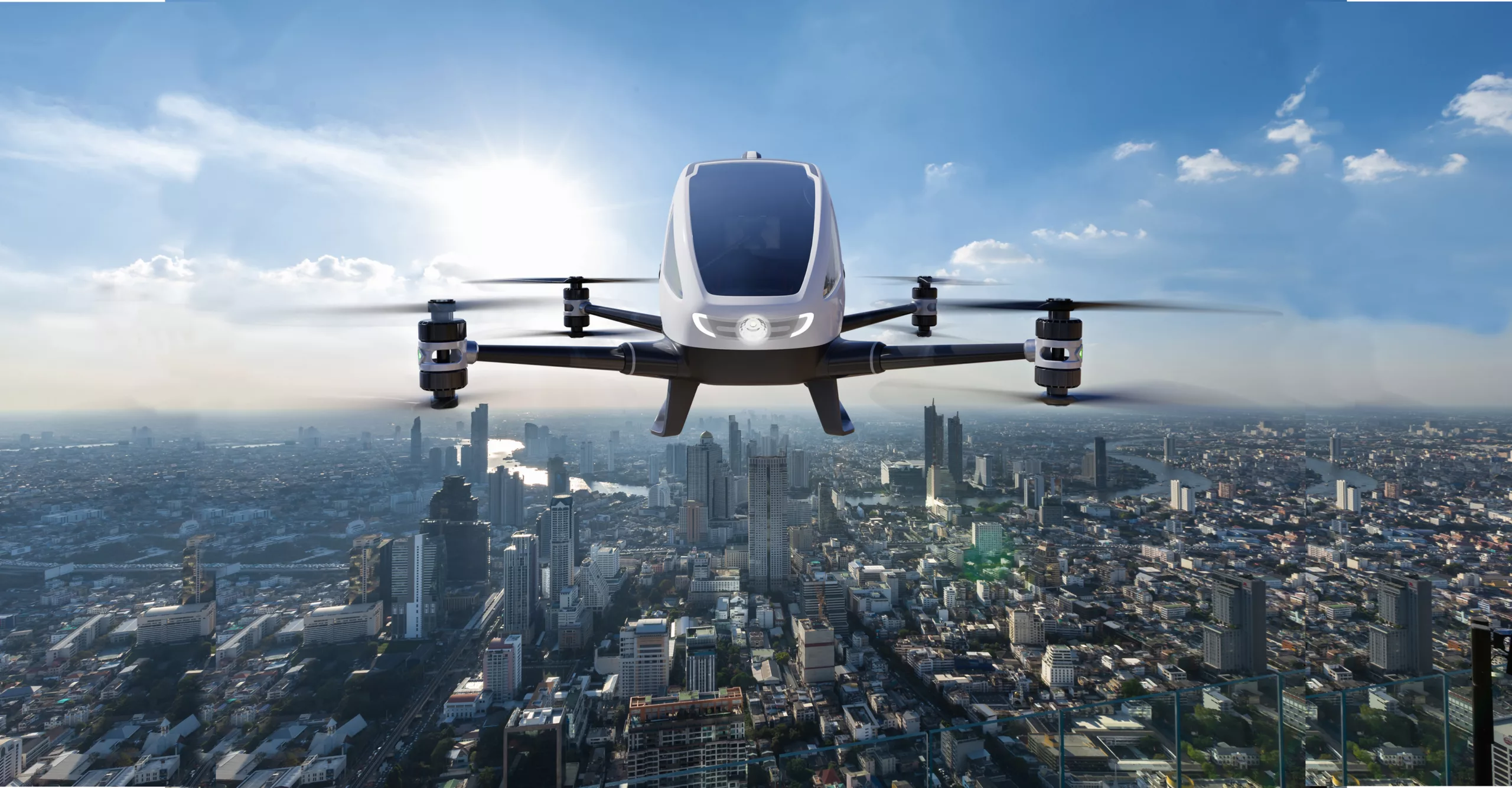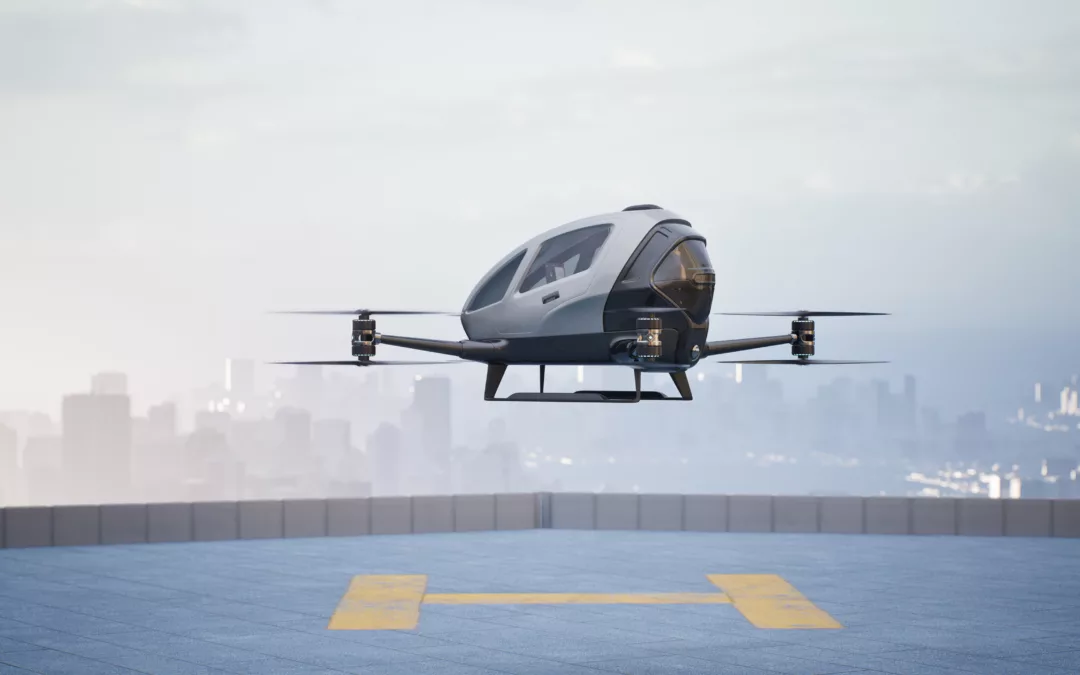Urban Air Mobility (UAM) and Advanced Air Mobility (AAM) are not just new terms, but symbolise a radical evolution in the transport sector.
These innovations, based on the use of UAVs (Unmanned Aerial Vehicles) and eVTOL vehicles, outline a future in which the skies of our cities will be criss-crossed by electric vehicles, capable of moving people and goods with unprecedented efficiency.
Urban Air Mobility (UAM) and Advanced Air Mobility (AAM), as it is called in the US, represent a revolutionary paradigm shift in urban and intercity transport. These concepts refer to the use of unmanned aerial vehicles (UAVs) and electric vertical take-off and landing vehicles (eVTOLs) to transport people and goods across cities and beyond.
UAM: The heart of Urban Air Mobility lies in dense urban environments, where traditional ground transportation methods can become inefficient due to traffic and congestion. Here, UAM drones promise to provide more agile and environmentally friendly mobility, capable of navigating the urban fabric with ease. UAM vehicles are designed to cover relatively short distances, typically between 20 and 60 km, offering a solution for intra-urban
transport in an agile manner and promising to cut travel time while also reducing pollution.
Not only urban travel. The UAM also encompasses longer routes, linking airports to city centres and beyond allowing air transport over longer distances. eVTOL manufacturers are designing aircraft for routes that can extend up to 150-200 km, connecting different cities or regions. These small aircraft could therefore offer an effective solution for intercity and regional transport.
UAM envisages a wide range of uses. For transporting people, eVTOLs can offer a fast and convenient means of travelling within cities or between neighbouring cities. Cargo drones are already available and can be used to deliver goods, reducing delivery times and improving logistics efficiency. Other uses include emergency services, such as the delivery of blood or organs between hospitals or remote locations that are difficult to reach,
and potentially even medical evacuation, and environmental monitoring.
UAM or AAM require the use of specialised infrastructure, such as vertiports, for take-off and landing operations.
These vertiports can be integrated into existing urban spaces such as in the immediate vicinity of airports, and as the roofs of buildings or unused areas, minimising the impact on urban planning. In suburbs they could involve undeveloped spaces that could become emergency landing areas. It is also necessary to establish flight paths and spaces called corridors, which are the equivalent of roads for cars and conventional vehicles. As well as intermediate landing areas, which are necessary for charging and logistical operations on the route.
The level of complexity is obviously high and ensuring safety in all steps requires systems adapted to the challenge.
We know this well because for years we have been working to ensure obstacle detection and bird strike mitigation with the application of innovative and as yet unseen knowledge and technologies in the domain.
THE EGE COMPANY is a very competent and active player in this domain, developing artificial intelligence-based solutions to avoid collisions with obstacles and birds during take-off, landing and flight. These advanced non-cooperative obstacle detection systems, combined with the implementation of well-defined “flight corridors”, can ensure that UAM is
not only efficient, but also and above all safe.
In conclusion, Urban Air Mobility promises to revolutionise urban and intercity transport, offering more efficient and sustainable mobility (as the vehicles used will be all electric and battery-powered with low-decibel emissions to be respectful not only of the environment but also of our ears). However, to fully realise this potential, it is essential that safety solutions such as those offered by THE EGE COMPANY are fully integrated into the
design and implementation of UAM and AAM systems.
EASA, the European Aviation Safety Agency, has also recognised the importance of frontier technologies and has defined a road map for their implementation. Artificial intelligence, machine learning and deep learning are all key aspects of this road map, as they enable the design of safe flight scenarios and the effective management of flight operations.
Certainly, with BCMS Ventur and the Ventur-C variant for corridor safety and Ventur-X for in-flight safety, THE EDGE COMPANY is able to bring complete solutions.
We will explain this in future articles in which compliance with EASA guidelines is also of paramount importance by overcoming less advanced and environmentally friendly technologies.


